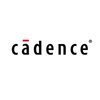Filter interviews by
Molex CAD Design Engineer Interview Questions and Answers
Molex CAD Design Engineer Interview Experiences
1 interview found
(1 Question)
- Q1. Basic Mechanical Engineering Concepts
(1 Question)
- Q1. Geometric Dimensioning and Tolerancing
(1 Question)
- Q1. My Project Work
Interview questions from similar companies

Senior Design Engineer Interview Questions & Answers
Advanced Micro Devicesposted on 29 Oct 2024
(2 Questions)
- Q1. Discussed about the previous projects which you have worked on
- Q2. Basic concepts of SV and UVN

(1 Question)
- Q1. Basic of electronics systems
(1 Question)
- Q1. Basic of digital electronics

C, c++ python and simple aptitude
(2 Questions)
- Q1. MOSFET working & types
- Q2. CMOS inverter and it's working
- Ans.
A CMOS inverter is a type of digital logic gate that switches between high and low voltage levels.
CMOS stands for Complementary Metal-Oxide-Semiconductor
It consists of a PMOS (p-type metal-oxide-semiconductor) and NMOS (n-type metal-oxide-semiconductor) transistor connected in series
When the input is high, the PMOS transistor conducts and the output is low
When the input is low, the NMOS transistor conducts and the outp...
(2 Questions)
- Q1. Behavioral question & hr question
- Q2. Hr discussion & salary discussion

(1 Question)
- Q1. STA , setup and hold?

I applied via Internshala and was interviewed in Mar 2024. There was 1 interview round.
(2 Questions)
- Q1. Tell me about yourself
- Q2. Questions based on experience and projects

Design Engineer Interview Questions & Answers
Cadence Design Systemsposted on 10 Jul 2024
I applied via Job Portal and was interviewed in Jan 2024. There was 1 interview round.
(2 Questions)
- Q1. Write a c program on fibbonacci series
- Ans.
A C program to generate Fibonacci series
Declare variables to store current and previous Fibonacci numbers
Use a loop to calculate and print Fibonacci numbers
Handle edge cases like 0 and 1 separately
- Q2. Design a up counter circuit
- Ans.
A up counter circuit is a digital circuit that counts upwards in binary sequence.
Use flip-flops to store the count value
Connect the output of one flip-flop to the clock input of the next flip-flop
Use logic gates to control the counting sequence
Add a reset input to clear the count when needed
Interview Preparation Tips
Skills evaluated in this interview

I applied via Naukri.com and was interviewed in Apr 2024. There was 1 interview round.
(1 Question)
- Q1. Electronic related questions were asked PCB related

I applied via Walk-in and was interviewed in Feb 2024. There were 3 interview rounds.
Basic aptitude questions
(1 Question)
- Q1. Tech questions related to domain
(1 Question)
- Q1. Genenral questions that are non technical

I applied via campus placement at Motilal Nehru Institute National Institute of Technology (NIT), Allahabad and was interviewed before Aug 2023. There were 2 interview rounds.
Questions covering various aspects
(2 Questions)
- Q1. Design a mood 3 counter
- Ans.
A mood 3 counter is a device that tracks and displays the user's mood on a scale of 1-3.
Design a simple interface with 3 buttons for the user to input their mood (happy, neutral, sad)
Include a display screen to show the current mood level
Implement a reset button to clear the mood counter
Consider adding a visual indicator such as colored LEDs for each mood level
- Q2. What are the three states
- Ans.
The three states refer to the three fundamental states of matter: solid, liquid, and gas.
Solid: particles are closely packed together and have a fixed shape and volume (e.g. ice)
Liquid: particles are close together but can move past each other, taking the shape of their container (e.g. water)
Gas: particles are far apart and move freely, filling the entire space of their container (e.g. air)
Skills evaluated in this interview
Molex Interview FAQs
Tell us how to improve this page.
Molex Interviews By Designations
- Molex Engineer Trainee Interview Questions
- Molex Design Engineer Interview Questions
- Molex Analyst Interview Questions
- Molex Planning Engineer Interview Questions
- Molex Software Engineer Interview Questions
- Molex Team Lead Interview Questions
- Molex Trainee Operator Interview Questions
- Molex Accountant Interview Questions
- Show more
Interview Questions for Popular Designations
- Design Engineer Interview Questions
- Auto CAD Designer Interview Questions
- Mechanical Engg. Design Interview Questions
- Senior Design Engineer Interview Questions
- Cadd Designer Interview Questions
- Electrical Design Engineer Interview Questions
- Structural Design Engineer Interview Questions
- Piping Designer Interview Questions
- Show more
Interview Questions from Similar Companies
Molex CAD Design Engineer Reviews and Ratings
based on 5 reviews
Rating in categories
|
Product Design Engineer
89
salaries
| ₹4.5 L/yr - ₹11.6 L/yr |
|
Quality Inspector
75
salaries
| ₹1 L/yr - ₹4 L/yr |
|
Analyst
62
salaries
| ₹3.7 L/yr - ₹7 L/yr |
|
Trainee Operator
57
salaries
| ₹1.6 L/yr - ₹2.8 L/yr |
|
Team Lead
47
salaries
| ₹8 L/yr - ₹22.5 L/yr |

TE Connectivity

Amphenol

Delphi Automotive Systems

Jabil
Calculate your in-hand salary
- Home >
- Interviews >
- Molex Interview Questions >
- Molex CAD Design Engineer Interview Questions










